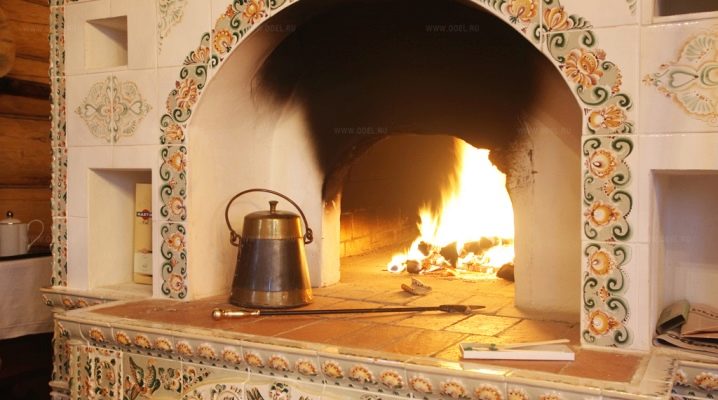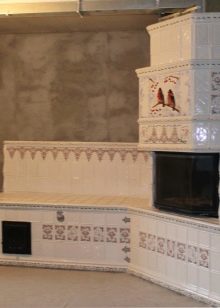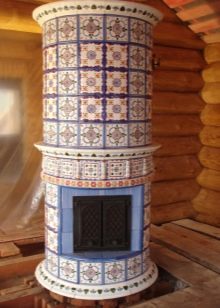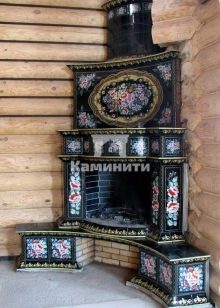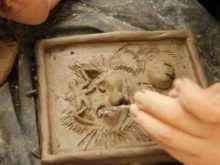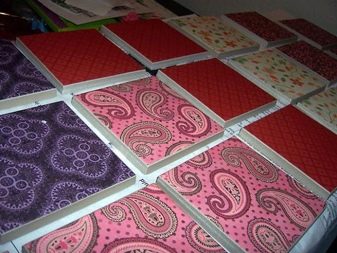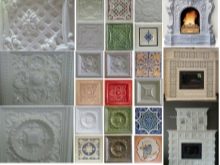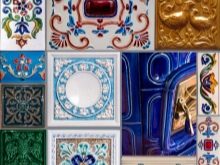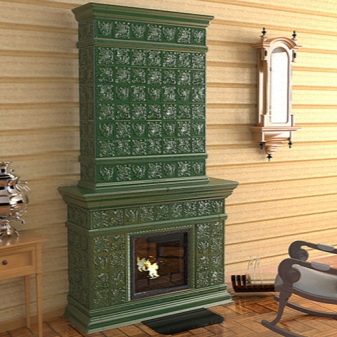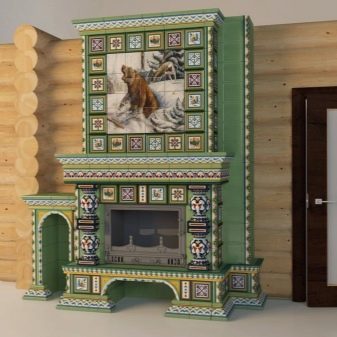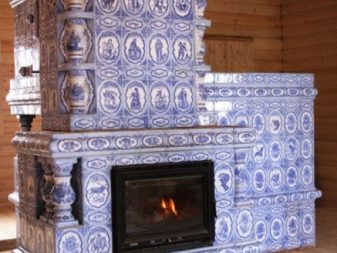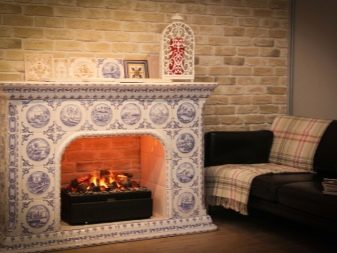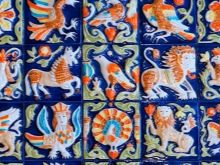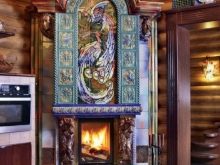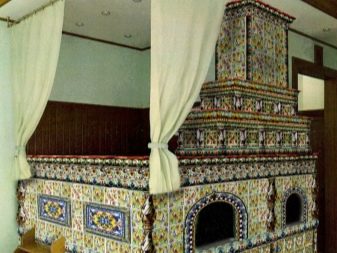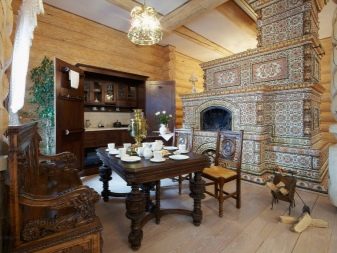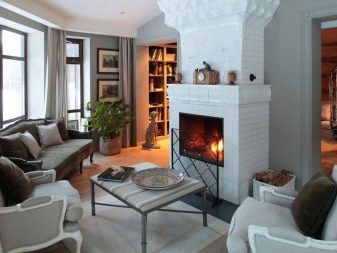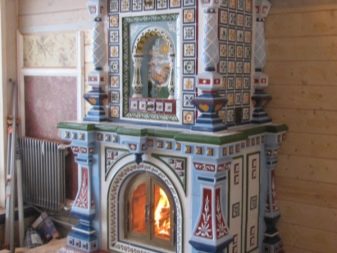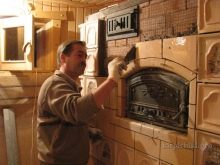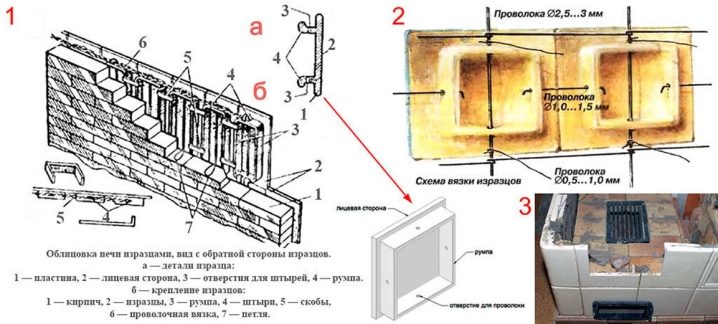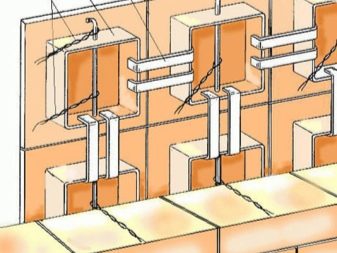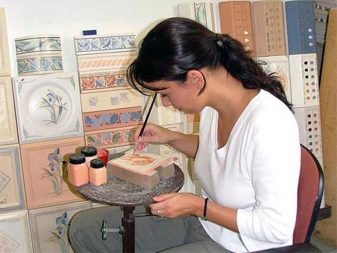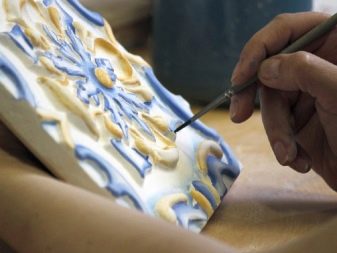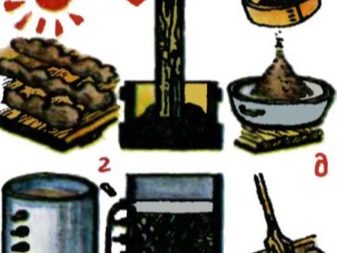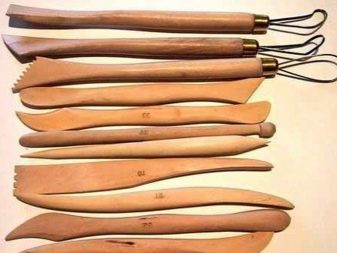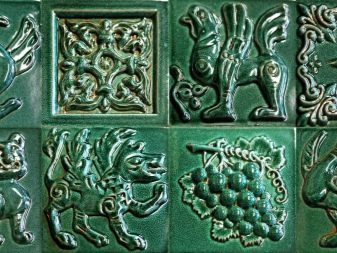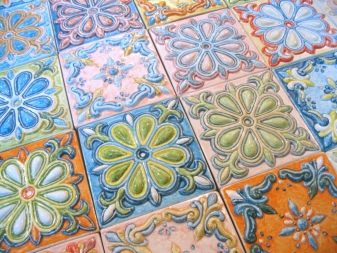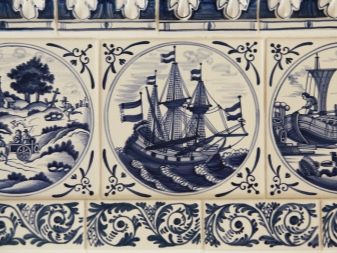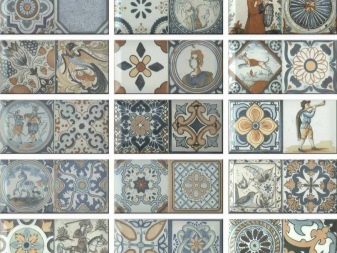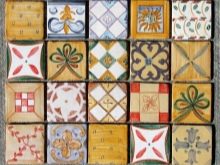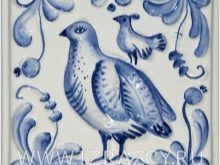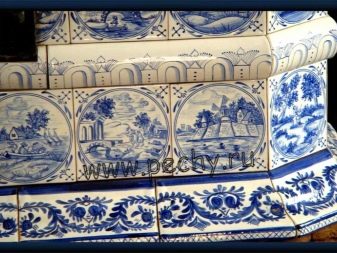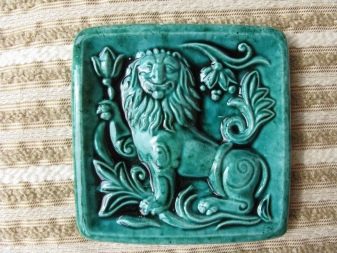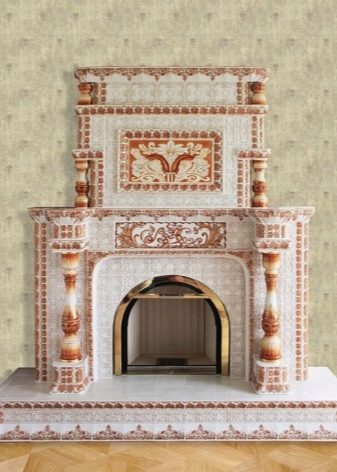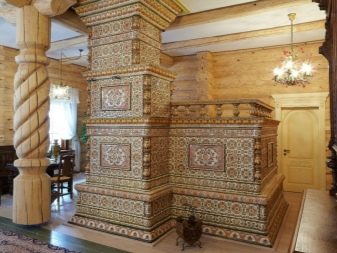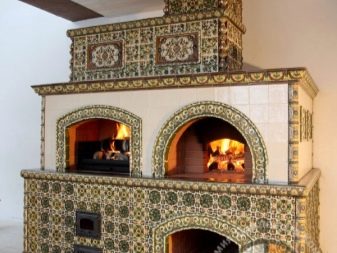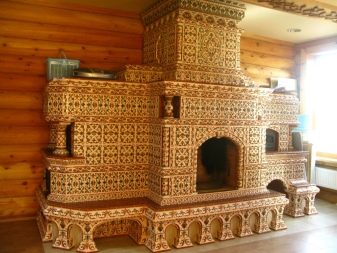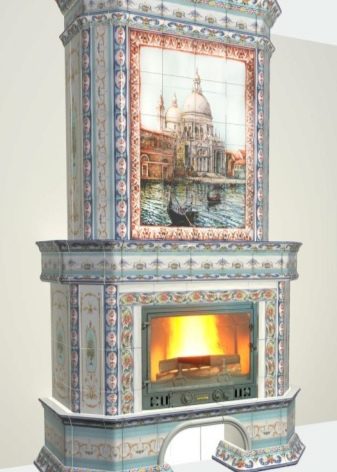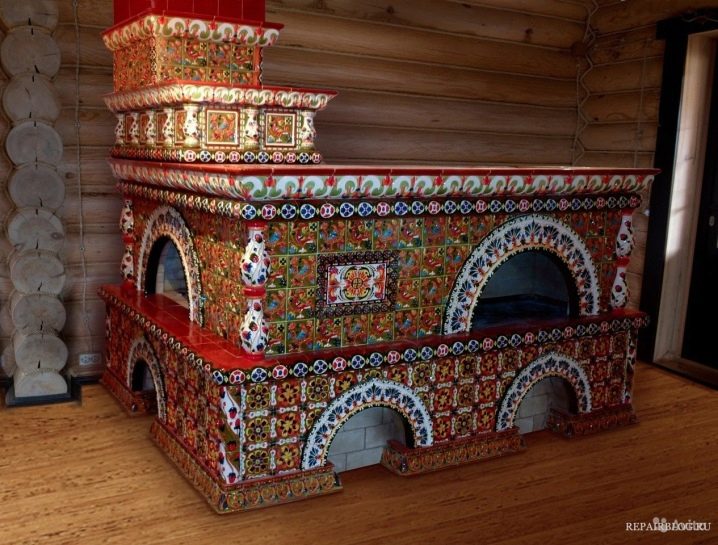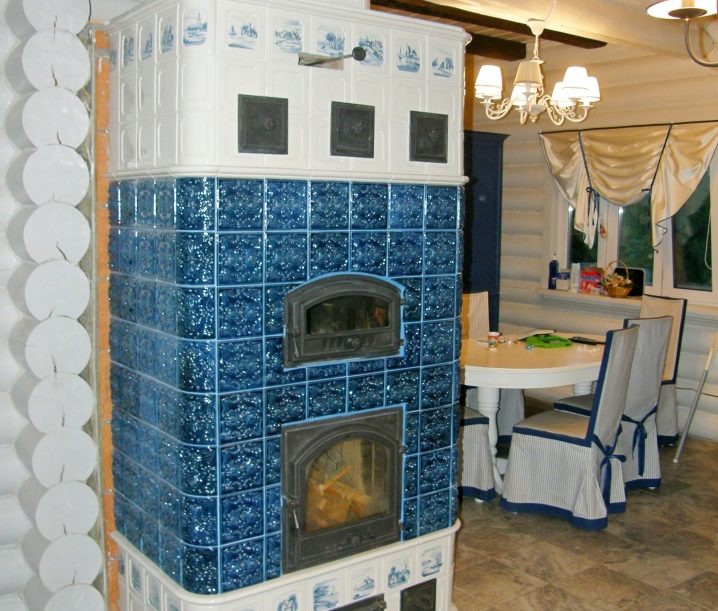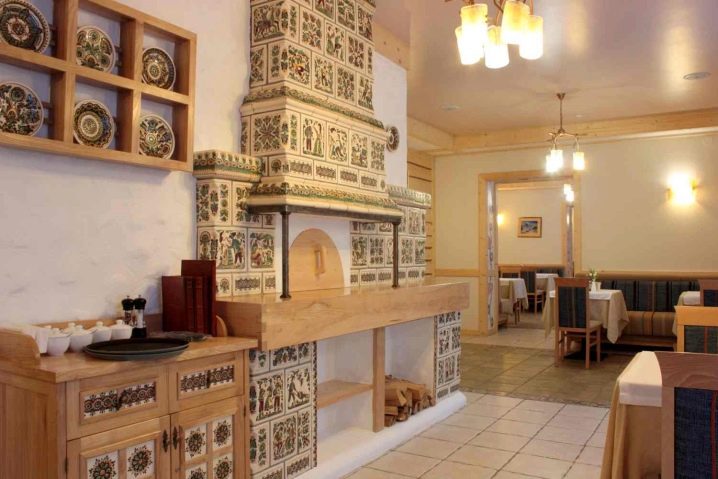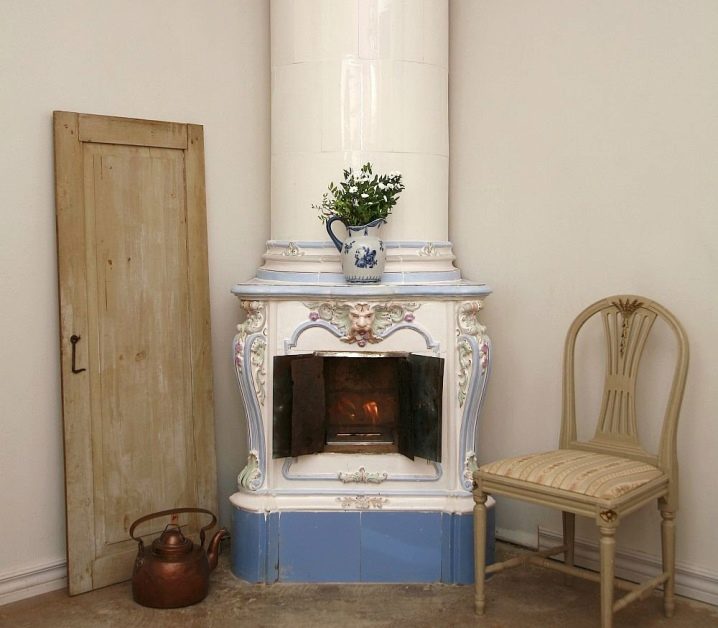Tiles for the stove: types and their features
Decorating stoves and fireplaces with tiles is the most attractive type of decorating surfaces. The process of laying such tiles is a job that requires a high level of professionalism from a specialist. Tiled fireplaces and stoves will become a real work of art, which, in addition to aesthetic appeal, due to this finish increases the efficiency of space heating.
What it is?
Ceramic tiles, decorated with multi-colored glaze, was used in ancient Egypt to decorate walls and ceilings. In Europe, tiles appeared much later. They were veneered in the houses of the aristocracy. In Russia, such products first decorated the facades and the interior of the temples.Later, tiles began to revet heating devices in the dwellings.
This tile is the most expensive material, the manufacturing process of which is a rather complicated and laborious manual work.
Today, the finishing of such products for interior items and various surfaces has again become a fashionable trend in the design of houses and apartments. The shape of the tile and the technology of its production have been improved over the centuries, thanks to which modern products amaze with their variety of ornaments and textures. A wide range makes it possible to decorate the stoves or fireplaces in the general style of the home, filling it with beauty and comfort.
Tiles is a product of baked clay, which has some differences in its configuration.
Special features
A distinctive feature of such a tile is the presence of a rump - a protrusion having a box-shaped form on the reverse side. Due to this feature of the products, their strength increases, as well as the overall heat capacity of the heating device. Production of elements in the form of bulk products is a significant difference between products from ceramic tiles.
The unique structure of the tile makes it the best material for lining furnaces. The raw material for the manufacture of tiles is clay. During the temperature increase, its expansion rate has the same value as the level of expansion of the brickwork, thanks to which the material gets excellent heat transfer properties.
In the process of laying elements behind a decorative canvas, a kind of “air pillow” is formed, which is filled with heated air, which makes it possible to evenly distribute heat over the entire surface of the furnace.
The main advantages of tiles include:
- resistance to temperature fluctuations;
- a good indicator of strength, which is achieved due to the thickness of the product;
- heat accumulation - the heated furnace will give heat to the room for about a day;
- small moisture absorption rate;
- ease of maintenance;
- fuel economy;
- low level of material trauma - contact with the surface does not cause burns;
- big operational term;
- historical significance.
The appeal of tiled tiles is beyond competition. The stove, decorated with such products, will be in perfect harmony with the interior of the room in the modern high-tech style or in the rustic style of decoration, which was popular even during the reign of the king.
Modern models of stoves are designed in such a way as to use a minimum of fuel, and therefore save money on heating the room. Modern universal designs work great on natural raw materials, as well as alternative fuel options.
Kinds
The technology of laying tiles on the surface of the furnace presupposes the option of only one-piece laying, due to which the unique properties of the material will be actively used to preserve and retain heat. Otherwise, they will not be able to perform their functions.
Based on the shape of the tile, there are three main types of this material:
- Shaped products. The main scope of their application are protruding areas on the stove, for example, curtain rods. Such elements have, rather, a decorative purpose.
- Frontal products - it is used for laying on a flat surface.
- Corner tile, which revet the corners on the surface.
However, this standard classification is not limited to the main species. There are a lot of variants and forms of such tiles, for example, there are socle elements, which are laid on the surface above the floor.
To make the finish of the heater, you need at least two types of material regardless of the design of the stove, since each individual sample is responsible for fastening to a certain part of the surface — the corner elements are fixed to the furnace edges, the fittings can be used for smooth webs, the eaves samples are the decor for the fireplace portal, the round parts are used for the rounded parts of the room stove.
Complex designs of furnaces require additional configuration of elements for cladding - these can be shelves, edges, rims, as well as views that are used to regulate cast iron blowers in the furnace.
Design
To paint stove tiles, the following technologies are used:
- Works are performed using ordinary oil paints and are called cold painted. Before this, the elements are treated with linseed oil, they are allowed to dry.Usually it takes a day or two. Then they paint, let them dry again and cover with oil varnish. This method of decorating does not involve roasting tiles in a kiln.
- Painting by engobes is performed using different types of clay.
There are two options for similar processing:
- The use of diluted clay, the thickness of which resembles the consistency of food sour cream. The raw materials during work form various shades - from white to dark gray; red or brown color options can also be obtained. From heat treatment, the tone of the painting changes somewhat.
- The element is immersed in water, and then a white layer of engobe is applied on it. After that, the tile is dried and painted in gouache, which has good resistance to high temperatures. For work the brush, a pear from rubber or a horn with a tubule on the end is used. If there is no need to paint products with glaze, then in an engobe before processing, in order to give the product additional strength, from 10 to 30% of crushed glass is included. Crush it in special gloves and glasses to comply with safety requirements.This will require a metal container with strong and thick walls, as well as a pestle made of metal, packed in polyethylene. Sift the resulting composition through a nylon stocking or fine sieve. Elements with an existing painting are re-fired.
According to the type of the front surface, the tiles are divided into smooth and relief elements.
By the form of the surface they produce glossy (glazed) tiles or matte and terracotta (not glazed). Glaze for decades retains its original appearance and does not need specific care. Also there are faience types of tiles.
By the type of the picture the tile happens with an ornament and without it.
Tiled tile painting style can be:
- Dutch - performed in a blue color palette on a snow-white background. Basically, these are marine themes, mills and landscapes.
- The Spanish direction is characterized by ethnic motives, which reflect the images of the East.
- German direction, a distinctive feature of which is the correctness of the lines of the figure, as well as simplicity and conciseness. Such products are made in a standard size and do not require additional processing before finishing.surface.
- Russian style is distinguished by bright colors and a variety of patterns. As an example, you can bring painting Khokhloma. This direction can be divided into species according to the principle of nucleation in a particular region, which is reflected in the shape of the relief, application options and types of the depicted pattern.
Khokhloma painting originated in the Nizhny Novgorod province, in the village of Khokhloma. The first porcelain factories appeared in the Gzhel volost, hence the eponymous name for blue patterns on a white background. Similar options for decorating tiles are widely used today.
Tiled elements from the city of Delphi are decorated with cobalt painting. The Flemish direction involves painting with blue and white flowers, as well as ornaments of chocolate shades.
The Dutch school in combination with the original French trends favorably differs by refinement and sophistication. In England, they preferred to put state symbols on tiles that set a very characteristic aristocratic British style.
Tiled design has a lot of variations not only in style, but also according to the presentation of the decor:
- complex relief images;
- narrative compositions that highlight certain historical moments, narrating about epic or fairy tales of different nations;
- patterns related to a particular locality;
- vegetable compositions.
Based on the dimensional grid, it is also possible to make a certain classification of tiles. However, in this case it is necessary to take into account that for each manufacturer the dimensions of the elements may vary. This feature is explained by the specifics of manufacturing products.
Most samples have the following dimensions: the thickness of the element is from 40 to 50 mm with a square tile size of 200x200, 220x220 (in the case of a square version) or 205x130 mm when the product is made in the form of a rectangle. Such dimensions are regulated by the relevant State Standards.
Based on the type of rumpe tiles can be divided into:
- ordinary products, where the tarp has a slanting cut;
- tile with a side, so that the fastener element to produce much more convenient; this feature is ensured by the presence of mounting holes;
- There are rumpy with a complex structure of the board and several cameras.
Domestic and foreign manufacturers of tiles for stoves offer buyers to familiarize their catalogswith products. They contain already complete compositions or sketches from which you can put the desired picture. However, the customer has the opportunity to order a set of elements, including their own version of decorating the surface of the stove or fireplace.
Beautiful examples in the interior
Tile stoves for a country house or a manor have always been a subject emphasizing the viability of the owner.
The Russian stove, lined with painted tiles with a stove bench, will decorate the living room in a country house, will help to give the interior a certain style, will serve as a convenient place for spending time in winter, warming with warmth and pleasing the eye with its beauty and originality.
The space in the dwelling space reserved for the heater, be it a stove or a fireplace, can be completely different, it all depends on the preferences of the owners. This also applies to the design of the device.
The stove in the dining room with the painting in the Gzhel style will perfectly complement the interior of the room, furnished in a simple and light classical style with a predominance of white.
The kitchen is the place where the stove becomes a functional device.which gives not only warmth and comfort, warming the dwelling, but also helps the hostess in cooking.Bright and colorful tiles will give a lot of positive emotions and decorate even the most ordinary and simply decorated room.
The bedroom in which the stove will be located, decorated with monochromatic snow-white tiles and stucco, will turn the usual rest room into royal luxurious chambers and will warm it with its warmth. Tiles in oriental style will decorate the bedroom and give the room the mystery of the East and the uniqueness of the interior.
A stove or fireplace lined with tiles in an apartment or a country cottage is an excellent option that combines the practical component of decorating surfaces with the aesthetic pleasure of contemplating decor made in the old fashion or in the style of the latest trendy tendencies.
How to decorate the oven tiles, see the next video.
